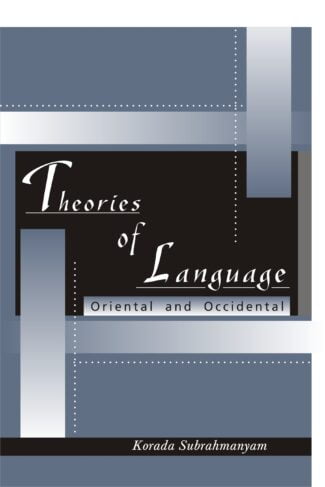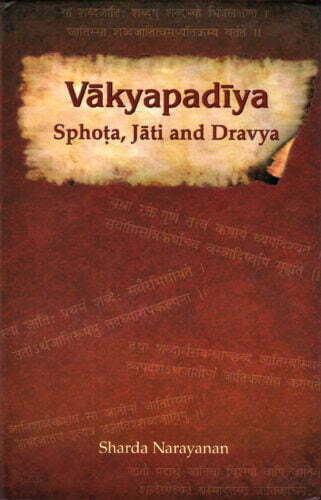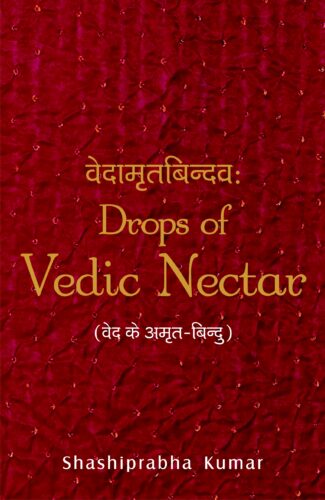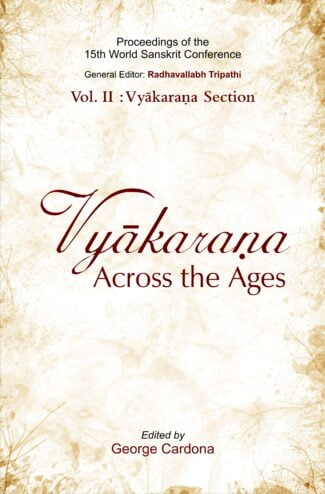Showing 51–59 of 59 results

The core of this book is devoted to the karaka theory as it is taught in the Bhattikavya. In the introductory section, an outline of this kavya and a summary of the authors findings in his previous work on it are given.
There has been a steady flow of scholarship dealing with the karaka theory as expounded in various grammatical works. The purpose of the present book is to conduct a searching examination into a text which has received little attention from Paninian scholars and whose voice has remained unfamiliar, the Bhattikavya. One can see from Bhattis illustrations of the karaka rules how he interprets them, and also how he interweaves the illustrations with the Rama story in his poetic work, which is intended as a textbook on Sanskrit grammar. In the introductory section, an outline of the Bhattikavya and a summary of the authors findings in his previous work written in Japanese on this kavya (2017, Kyoto: Hozokan) are given. The present volume also includes two appendices that take up related questions concerning poetic composition and Vedic usage.

The book is the end result of indepth study and decades’ research on the Oriental and Occidental language theories. The theories that are propounded and expounded by Indian sages and intelligentsia are impeccable, incorrigible and time-tested besides being universal. The book should interest scholars for advanced linguistic study of both kinds.
The volume presents a panorama of the theories of language, covering both ancient and modern theories. It deals with the origin and development of ancient theories of language with their clear and unambiguous definitions, rules and norms that offer impeccable solutions to all problems at syntactic and semantic levels. With systematic and logical explanations of language theories, the work examines ancient grammar including connection of vyakaranam with philosophy and sphota. It also takes up the origin and development of Western linguistic theories emphasising on the inability of modern linguistic science to agree on basic definitions, as of the meaning of a word, and concepts of discourse, text, macro sentence, with there being an attempt to constantly revise theories. It analyses the chief concepts studied by ancient Indian and other linguists pertaining to discourse, particularly the importance of inference in the Nyaya system of Indian philosophy and the Nyaya logical discourse. The volume will provide students and scholars of philosophy a fundamental work on linguistic theories.

The book deals with the main contribution of Bhartrhari to the field of linguistic study and its impact on philosophy in general. Presenting a systematic study of the jati, dravya and bhuvodravya samuddeshas in the Vakyapadiya it also looks at the concept of jati in the philosophies of Nyaya and Mimamsa.
This research study is concerned with understanding the concept of jati and dravya in the Vakyapadiya of Bhartrhari.
The concept of jati is crucial to the enunciation of sphota, the single most outstanding contribution of Vakyapadiya to the field of language study. The concept, already connected with the import of a word in Nyaya-Vaisheshika and Mimamsa schools, was brought into the field of linguistics by Bhartrhari. This book traces the development of language study from the Vedic period to the darshanas. It deals with the main contribution of Bhartrhari to the field of linguistic study and its impact on philosophy in general. It then presents a systematic study of the jati, dravya and bhuyo dravya samuddeshas in the Vakyapadiya, explaining all the karikas. It also views the concept of jati in the philosophies of Nyaya and Mimamsa, its development over the centuries and the necessity of modifying some tenets owing to the sharp criticism from other schools especially Buddhism. The volume includes relevant quotations from Sanskrit texts and makes use of important commentaries like the Prakasha of Helaraja and Ambakartri of Pt. Raghunatha Sarma.
The scholarly work will prove invaluable to scholars and students of Indology, particularly those keen on studying Indian linguistic philosophy with special reference to Bhartrhari.

Vedamritabindavah (Drops of Vedic Nectar) is a modest tribute to those who are genuinely interested in Vedas universal message. It is a collection of select Vedic statements with Hindi and English translations intending to communicate the Vedic wisdom to the young people of modern age. This book, with fairly accurate translations from Vedic Sanskrit, aims to acquaint the modern readers with their most ancient, richest literary heritage so that they can comprehend its worth and bring value to their life.
In spite of numerous translations available, this volume has some novelty in its content and freshness in its presentation, and stands witness to the fact that in representing Vedas, there still exist infinite possibilities.
Vedamritabindavah (Drops of Vedic Nectar) is a modest tribute to those who are genuinely interested in Vedas universal message. It is a collection of select Vedic statements with Hindi and English translations intending to communicate the Vedic wisdom to the young people of modern age. This book, with fairly accurate translations from Vedic Sanskrit, aims to acquaint the modern readers with their most ancient, richest literary heritage so that they can comprehend its worth and bring value to their life.
In spite of numerous translations available, this volume has some novelty in its content and freshness in its presentation, and stands witness to the fact that in representing Vedas, there still exist infinite possibilities.

This book, typed afresh, presents a phonetic survey of Vedic sounds, offering explanatory accounts of Vedic sandhi-system, declension, conjugation, indeclinable words, nominal stem formation and syntax. It is the first ever most authentic, linguistic material of the Rgveda.
Here is a key to unlock the oldest treasury of mankinds wisdom: Vedic literature not just the metrical language of its hymns, but also the prose pieces of the Brahmanas/Brah-mana-like writings: whether from the Atharva or the Yujurveda. Setting forth a comprehensive phonetic survey of Vedic sounds, the author: an eminent Orientalist of yester years, offers lucid explanatory accounts of Vedic sandhi-system (euphonic combination), declension, conjugation, indeclinable words, nominal stem formation and, finally, of its syntax with numerous illustrations. At the base of Macdonells Grammar is the first ever, yet the most authentic, linguistic material of the Rigveda supplemented, though, it is from other Samhitas as well. Also marked here are the grammatical forms of the Brahmanas where they differ from those of the later-day classical Sanskrit. Now reprinted afresh in an innovative format, this book has sustained its decades-long worldwide importance as an undisputed, systematically organised aid to the study of Vedic literature. And, for sure, retains its indispensablity to scholars even today!

This book, typed afresh, presents a phonetic survey of Vedic sounds, offering explanatory accounts of Vedic sandhi-system, declension, conjugation, indeclinable words, nominal stem formation and syntax. It is the first ever most authentic, linguistic material of the Rgveda.
Here is a key to unlock the oldest treasury of mankinds wisdom: Vedic literature not just the metrical language of its hymns, but also the prose pieces of the Brahmanas/Brah-mana-like writings: whether from the Atharva or the Yujurveda. Setting forth a comprehensive phonetic survey of Vedic sounds, the author: an eminent Orientalist of yester years, offers lucid explanatory accounts of Vedic sandhi-system (euphonic combination), declension, conjugation, indeclinable words, nominal stem formation and, finally, of its syntax with numerous illustrations. At the base of Macdonells Grammar is the first ever, yet the most authentic, linguistic material of the Rigveda supplemented, though, it is from other Samhitas as well. Also marked here are the grammatical forms of the Brahmanas where they differ from those of the later-day classical Sanskrit. Now reprinted afresh in an innovative format, this book has sustained its decades-long worldwide importance as an undisputed, systematically organised aid to the study of Vedic literature. And, for sure, retains its indispensablity to scholars even today!

This volume contains scholarly papers from the Veda Sessions of the 15th World Sanskrit Conference, touching a broad spectrum of the Vedic tradition and focusing on three major aspects of that tradition: language and linguistics; textual criticism and text edition; and culture, philosophy, mythology.
The Vedas hold a position of prominence, both as the oldest documents of Sanskrit and as the most venerable texts of Hinduism.
This volume contains scholarly papers from the Veda Sessions of the 15th World Sanskrit Conference, touching a broad spectrum of the Vedic tradition and focusing on three major aspects of that tradition: language and linguistics; textual criticism and text edition; and culture, philosophy, mythology.
Language and linguistics papers range from syntax and semantics (Hock, Küummel) to morphology (Tucker), onomastics (Pinault) and rhetorical structure (Klein). Remarkably, three of the articles in the second part deal with the tradition of Atharvaveda (Bahulkar, Kulkarni, and Rotaru and Sumant); the remaining two focus on Rigveda (Khare and Köhler). Two papers in the last part deal with matters of Vedic philosophy (Benedetti and Vedi), one is devoted to mythology and ritual (Gadgil), and one addresses ritual and material culture (Nishimura).

Covering the papers presented during the 15th World Sanskrit Conference, this book deals with Sanskrit grammatical treatises such as Eropean traditions of Sanskrit grammers; relations between terms and their meaning; the derivation of nominal forms in the Sàrasvata system; and the realm of modern Sanskrit literature, among others.
Sanskrit grammatical treatises, not only those of Panini and his successors but also work by Indian scholars representing other streams of grammatical thought, have long held the attention of modern scholars. The present volume contains a selection of the large number of papers presented in the Vyakarana Section of the 15th World Sanskrit Conference held in New Delhi, during 15-20 January 2012.
The scope covered in these papers is wide. The first contribution deals with currents in European traditions of Sanskrit grammars, from early works by missionaries to modern Sanskrit grammars. As could be expected, however, Panini is the centre of attention for most authors, whose contributions nevertheless differ in focus. Several scholars deal with theoretical issues concerning the interpretation and application of Paninian sutras, including points of Sanskrit syntax. The question whether particles (nipata), and preverbs (upasarga) in particular, should be considered independently to signify particular meanings or instead be treated as terms which serve to cosignify meanings assigned to items with which they co-occur is the object of two studies.
One paper treats in detail the relations which can be considered to hold between terms and the meanings they signify, with particular emphasis on what Bhartrihari has to say on this topic. A historically-oriented study deals with attacks on Paninian views by Mimamsakas of Prabhakara Naiyayikas. One scholar contrasts how particular nominal forms are derived in the Sarasvata system in contrast to the Paninian derivations of such forms. The final study in this collection brings us into the realm of modern Sanskrit literature, with a discussion of usage in the prose work Shivarajavijaya of Ambika Dutt Vyas.
Fellow scholars should welcome and profit from the varied studies contained in this volume.
वाक्यपदीय के तृतीय काण्ड में, जिसे स्वतन्त्र रूप से प्रकीर्णक भी कहा गया हैे, अपोद्धृत पद और पदार्थ का विश्लेषण किया गया है। प्रस्तुत खण्ड में इसी काण्ड के क्रियासमुद्देश से लिङ्गसमुद्देश तक कारिका और उस पर हेलाराजकृत प्रकीर्णकप्रकाश का हिन्दी अनुवाद है। अनुवादक ने कहीं कहीं अर्थसंगति की दृष्टि से मूल पाठ में आवश्यक परिवर्तन किये हैं और मूल की व्याख्या के लिये विस्तृत टिप्पणियाँ भी जोड़ी हैं।
क्रियासमुद्देश में भर्तृहरि ने क्रिया की अवधारणा पर विस्तार से विचार किया है। पाणिनि धातु की रूपात्मक परिभाषा देते हैं। भर्तृहरि के लक्षण के अनुसार साध्यरूप क्रमवान् अर्थ क्रिया है। इस लक्षण में प्रश्न उठता है कि “अस्ति” क्रिया की वाच्य कैसे है? सत्ता तो नित्य है, साध्य नहीं है और क्रमशून्य है। भर्तृहरि समाधान में कहते हैं कि “अस्ति” में कालानुपाती रूप का बोध होता है।
तृतीय काण्ड में यद्यपि पद और पदार्थ का विश्लेषण किया गया है तथापि भर्तृहरि की दार्शनिक दृष्टि का परिचय इस काण्ड में भी सर्वत्र मिलता है। जन्म और नाश, इन दोनों भाव-विकारों का निरूपण भर्तृहरि परिणामवाद और विवर्तवाद दोनों दृष्टियों से करते हैं। वैशेषिक दर्शन में काल द्रव्य है जो एक, नित्य और विभु है। भर्तृहरि के मत में काल ब्रह्म की मुख्य शत्तिफ़ है जो सभी शत्तिफ़यों पर नियन्त्रण रखती है। वृत्ति में इसे ब्रह्म की स्वातन्=यशत्तिफ़ कहा है। काल यद्यपि एक ही है किन्तु उपाधियों के भेद से उसमें अनेकत्व का व्यवहार होता है। वे काल से सम्बन्धित कुछ भाषिक प्रयोगों की चर्चा भी करते हैं। लिङ्गसमुद्देश में वैयाकरणों की लिङ्गविषयक अवधारणा को स्पष्ट करने का प्रयास किया गया है। इस विषय में वैयाकरण का अभिमत सिद्धान्त यही है कि लिङ्ग वस्तुधर्म है और सत्त्व, रजस् और तमस् गुणों की अवस्था-विशेष है। इसी प्रकार अन्य अवधारणाओं से सम्बद्ध अनेक महत्त्वपूर्ण प्रश्नों पर इन समुद्देशों में चर्चा की गई है।
| There are no products |